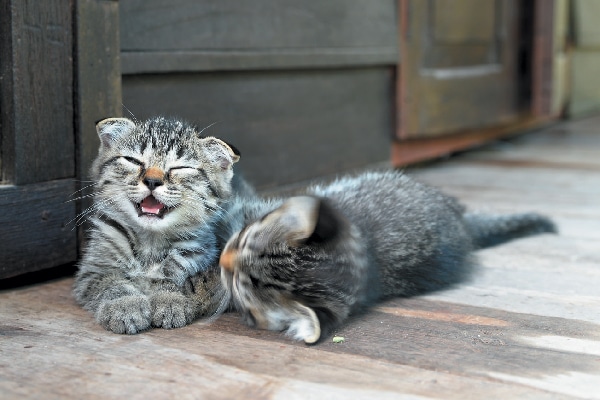Unless you’ve had cats before, you may be surprised at how different felines are from dogs or any other pet you may have had. It helps to understand how your cat sees his world, and his viewpoint can be more like his wild cat cousins than you expect. Here are eight things you should know about before bringing a kitten home.
1. How much cats should sleep
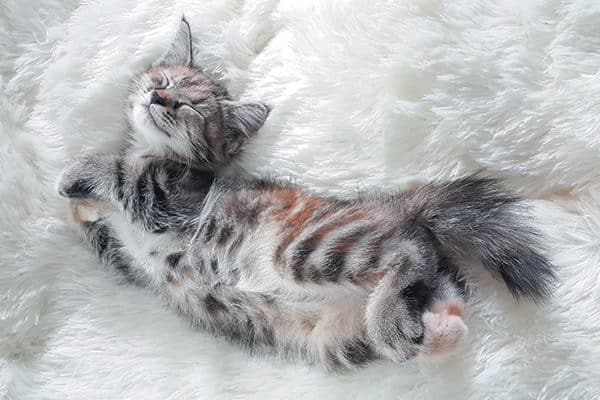
Like other cats his age, my 10-year-old tabby, Jack, sleeps anywhere from 15 to 20 hours every day. That seems like a lot, doesn’t it? It turns out that cats get in those 15-plus hours in small doses.
Cats alternate between two modes of sleep: dozing and deep sleep. The stretches of dozing usually last 15 to 30 minutes, alternating with 5-minute periods of deep sleep. When a cat is dozing, he is ready to jump up and get moving immediately.
Cats of all ages follow these basic sleep patterns, but the amount of sleep a cat needs may vary a bit with the cat’s age. Kittens sleep more than the average adult cat. In fact, newborn kittens sleep almost 24 hours every day, waking only to nurse for short periods and then going right back to sleep.
If you’ve recently added a new kitten to your household, don’t worry if he seems to sleep all the time. A kitten’s body releases growth hormones when he sleeps, so he’s just working on getting bigger. Kittens sleep deeply, but if it seems particularly difficult to rouse your kitten from sleep, take him to your vet to make sure nothing’s amiss.
Adolescent cats don’t need as much sleep as kittens, but you’ll still find these young adults stretched out in the sun whenever they get a chance. You may also notice that your young cat seems most active in the evening.
My cat Phillip gets what I call the “cat crazies” and races through the house right around the time I get home from work. At first I thought he was just happy to see me, but now I know it’s because cats are what’s called crepuscular, meaning they are most active at dusk and dawn. They’re not nocturnal, though some cats seem to have active spurts in the middle of the night.
When your cat wakes up at dawn every morning, it’s because that’s when his natural prey is awake, too. He’s wired to be awake with the sunrise. However, if your cat wanders the hallways howling at all hours of the night, he may have a medical issue, so take him to the vet at your first chance.
2. Playing with your cat — appropriately
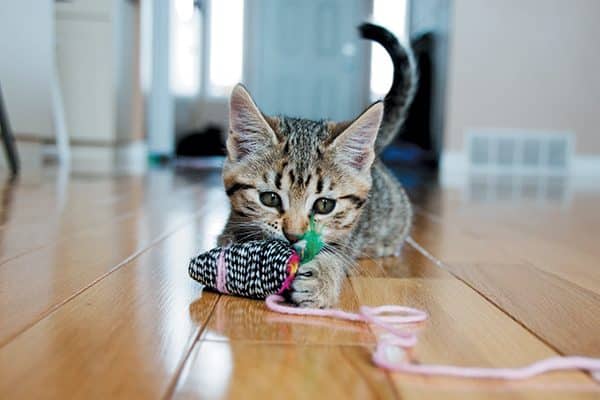
Chances are your cat frequently acts young at heart, scampering after toys or batting at motes of dust only he can see. Such play behavior is normal, according to Marilyn Krieger, certified cat behavior consultant, owner of The Cat Coach, LLC and author.
“No matter the age, most cats will play,” she explains. “Although play teaches important survival and social skills, play is also fun.”
Marilyn says that play is an important behavior for kittens. “In addition to learning important survival skills like hunting, play teaches socialization skills and boundaries,” she says. “People can help kittens learn boundaries by never using their hands when playing with them. It’s important that kittens/cats don’t think it’s OK to bite.”
If your kitten becomes overstimulated during playtime and tries to bite, call a time-out. Simply stop playing, turn your back on her, and leave the room for a few seconds to a minute to give her time to calm down. “The kitten will soon learn that when she bites or becomes overstimulated, her favorite person will stop giving her the attention she wants,” Marilyn says.
Be concerned if your kitten isn’t interested in playtime or seems lethargic. Marilyn says such a change in behavior warrants a visit to the vet.
3. What meowing means
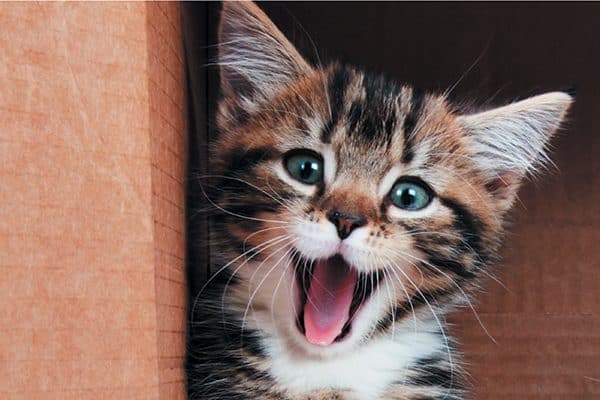
Becoming familiar with your cat’s typical “vocabulary” is an important part of cat ownership, says Jane Brunt, DVM, founder of Cat Hospital at Towson in Baltimore, because if your cat starts making different noises, it could indicate a medical issue.
“Knowing what’s normal for cats in general … is important,” she adds. “That way, when the cat exhibits behavior that’s different from ‘normal,’ you can respond appropriately. An obvious example is vocalizing when the cat has altered urinary function.”
Kittens use meows and other vocalizations to communicate with their mothers and other caregivers. These meows typically indicate when a kitten is hungry, cold or unsure of her surroundings. As a kitten grows accustomed to her environment, she might meow to reassure herself that her mother or caretaker is nearby.
Loud, plaintive meows that sound different from your kitten’s typical vocalizations could mean she’s in pain. Take her to the vet as soon as possible.
As kittens grow older, though, they tend to meow less when they are in the exclusive company of other cats (unless they are angry or upset — then they will growl and hiss).
“It’s been reported that cats don’t ‘speak’ to each other, though it’s normal for cats to vocalize when threatened by an intruder or predator, and they don’t have an escape route,” Dr. Brunt says. “On the other hand, with people, they often do speak. Pet cats often vocalize when they desire food, and since they frequently get rewarded, the behavior is reinforced.”
4. How kittens learn
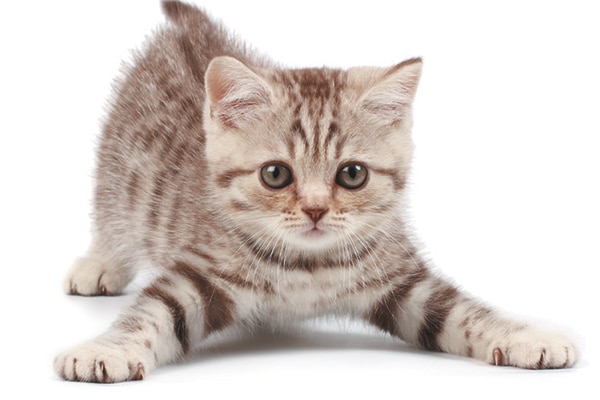
Though a cat’s brain is comparatively smaller than that of other mammals, the structure is quite similar to that of a human’s in that we both have cerebral cortices and lobes. Just as in humans, a cat’s cerebral cortex is responsible for decision-making, learning and both short- and long-term memories.
The cerebral cortex plays a critical part in a kitten’s development in that memory shapes so much of his ability to learn. A kitten takes note of what other cats, other pets and even humans do through interacting with them, and this helps the other parts of his brain develop properly.
When we first brought Phillip home at about 12 weeks old, he followed my older cat, Jack, around the house constantly and imitated many of Jack’s behaviors.
“Kittens in the early months need interaction with their own and other species to develop social skills (cerebral) and physical coordination (cerebellum) through play, exploration and mock hunting,” says Heidi Pavia-Watkins, DVM, of the Airport Irvine Animal Hospital in Costa Mesa, California.
If your kitten seems a bit shy and isn’t jumping feet first into the fray of the household, he probably still observes everything around him and learns from all of the various activities. Gently coax him to play with interactive toys.
A kitten who struggles at mealtime or can’t seem to grasp the concept of the litter box may be dealing with an injury or illness. Take him to the vet as soon as you can.
5. Why you must combat boredom
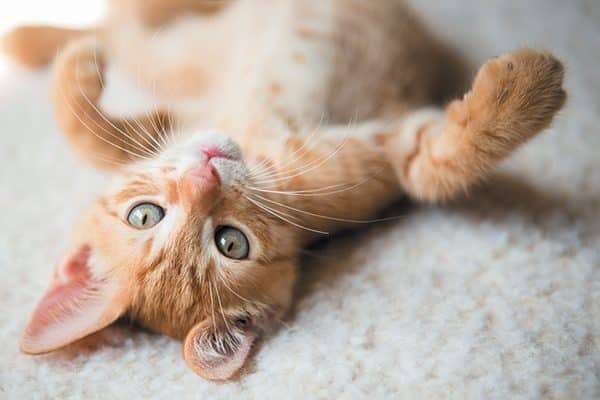
“Under-stimulated cats are at risk of developing boredom-related or stress-relieving behaviors, such as over-grooming, chewing inappropriate items, picking on companion pets, retreating into isolation, overeating, self-mutilation, compulsive behavior and loss of appetite,” explains Pam Johnson-Bennett, certified cat behaviorist and owner of Cat Behavior Associates.
Pam says that cats are made to be active. There are so many facts about your cat’s body that enable her to have incredible speed, stealth and accuracy, she says. “Imagine having all that equipment, and it never gets used. That’s the way it is for many cats.”
In my cat Jack’s case, we added Phillip to our household so he would have someone to run around with while we were away most of the day. “Having a buddy can make a huge difference when it comes to enriching a cat’s life,” Pam says.
Jack benefited greatly from his companionship with Phillip, and Phillip also benefited from Jack’s companionship, as even kittens need environmental enrichment to be healthy and happy.
Pam recommends socializing a kitten with a variety of people, sounds and experiences to help the kitten handle changes and introductions to new people as she grows older.
Don’t worry if your kitten is hesitant with new people or new situations. It’s likely because she is still getting used to everything, especially when you first bring her home. “Keep in mind that your home environment is unfamiliar and big,” Pam says. “That’s a lot for a little kitten to adjust to initially.”
Be concerned if your kitten seems listless or completely uninterested in her surroundings; take her to the vet as soon as possible.
6. Keep an eye on your kitten’s joints
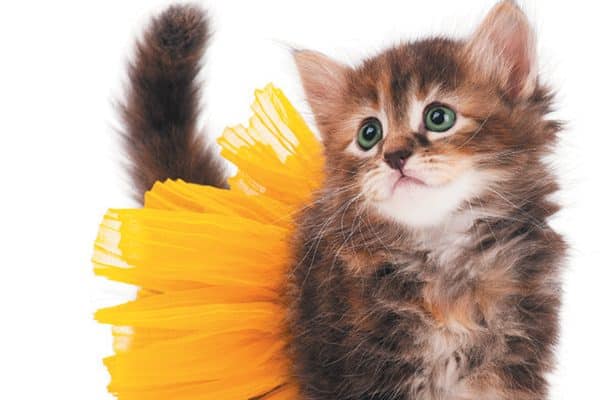
My first cat, Jordan, began to walk a bit slower and with less “spring” in his step in the last few years of his life. He could still jump up on the bed and make it up the stairs, and every once in a while he would get the “cat crazies” and race around the house, but he didn’t have the limber, fluid grace he had as a younger cat. Our vet assured me that this was a natural slowing process of Jordan’s aging and not symptoms of arthritis.
Some of the symptoms my vet mentioned — the appearance of stiffness when a cat woke up from a nap, limping that affected one or more limbs or difficulty jumping to spots he easily accessed before — were re-emphasized by Elaine Wexler-Mitchell, DVM, ABVP, of the Cat Care Clinic in Orange, California. She says these are “signs that degenerative joint disease, better known as osteoarthritis, exists.”
Dr. Wexler-Mitchell further explains that this condition develops when the cartilage between bones breaks down and no longer cushions the joints, allowing friction to occur. The resulting inflammation of the joints is called arthritis.
Arthritis is not the only malady to affect a cat’s joints. Other conditions include displacement of the kneecap, hip dysplasia and joint trauma (including ligament tears). A hereditary disorder, kneecap displacement occurs when the kneecap (patella) does not develop normally.
This condition may be accompanied by other abnormalities of the cat’s hind leg, such as the hip joint, femur or tibia. Hip dysplasia is another hereditary condition involving abnormal development of a cat’s hip joints.
Kittens typically don’t suffer from arthritis but might inherit the tendency to develop kneecap displacement or hip dysplasia. A kitten can also experience joint trauma if one of her limbs becomes twisted.
Your kitten might seem to totter around on unsteady legs. Young kittens can be wobbly and not always sure on their feet. She’ll gain her footing as she grows. However, limping, avoiding activity and cries of pain are warning signs. If your kitten displays any of these, have her examined by a vet as soon as possible.
7. What’s normal — and what’s not — for cat poop
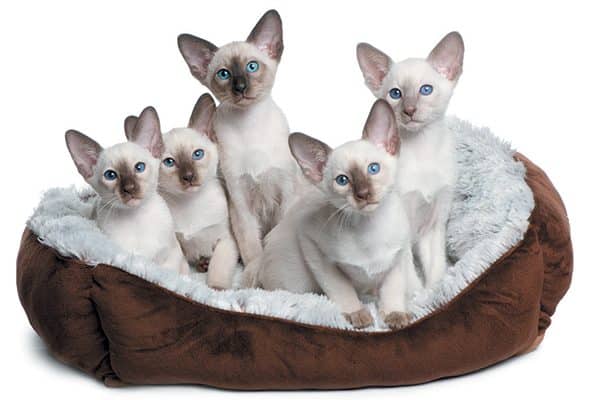
I know more than I ever wanted to learn about cats and their bowel movements, thanks to my cat Jack. Since we adopted him at 12 weeks old, Jack has experienced many episodes and bouts of stomach upset and questionable “output” as a kitten (right after we adopted him), as an adult and, now, as an almost senior cat.
As we’ve gone through this range of defecation issues with Jack, I have learned the differences between normal and abnormal changes in a cat’s bowel movements. I also spoke to Arnold Plotnick, DVM, founder of Manhattan Cat Specialists in New York City, about the causes and possible treatments for such concerns.
Dr. Plotnick calls kittens “little eating and pooping machines.” He notes that kittens typically will defecate several times each day. Because of their small size, changes in bowel movements should be monitored.
If your kitten misses a day in the litter box — meaning, she doesn’t poop for one day — just keep an eye on her. Constipation that lasts longer than a day or so, however, may be a cause for concern. It can have serious consequences if not recognized and treated in a timely manner, Dr. Plotnick says.
If you don’t see stool in the litter box after more than a day or two or if your kitten strains when trying to defecate, take her to the vet as soon as possible.
If your kitten starts having diarrhea, schedule a vet visit right away. “I think diarrhea in kittens is always a concern, because their small body size makes them very susceptible to dehydration,” Dr. Plotnick explains. “Kittens do not withstand dehydration very well and may become dangerously ill quickly if [the diarrhea is] not addressed promptly. All cases of diarrhea in kittens should be investigated.”
As a kitten grows into adulthood, the risks from occasional mild diarrhea and constipation decrease. “All cats occasionally experience a bout of diarrhea or constipation,” Dr. Plotnick says. “In most cases, it resolves on its own or with minimal intervention [such as] a change in diet or a brief course of medication.”
8. How cats care for their private parts
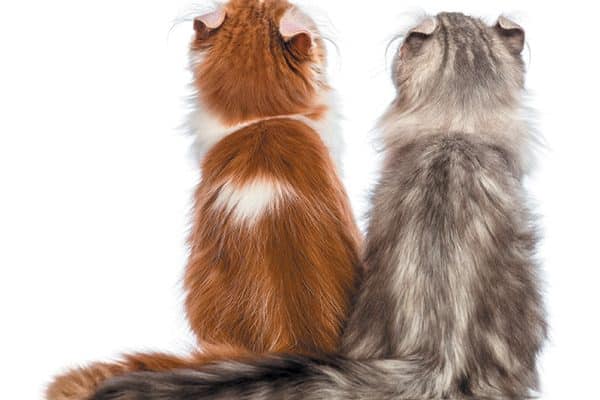
You’re entertaining a guest in your home, when your cat casually strolls into the middle of the room, plops down on the floor, lifts up his back leg and begins grooming his, well, private parts. Why would he do something like that and out in plain sight like he wants an audience? And, by the way, this behavior isn’t limited to the male cat population — female cats do it, too.
The vast majority of the time, the leg-in-the-air grooming session is simply that — a grooming session. For the most part, cats of all ages are fastidious about grooming themselves, including their genitals and anus. (Although the jury is still out on why they feel the need to do it in front of everyone.)
Female cats will help clean the rear ends of their young kittens. The mother also wants to stimulate the muscles around the anus to encourage her offspring to have bowel movements. As the kittens continue to grow, they begin to take over the grooming for themselves.
Your kitten may not take very good care of his private parts at first, particularly if he left the care of his mother at an early age. Help him out by cleaning the area when it needs extra attention.
Sometimes male kittens end up with one or both testicles undescended into the scrotum, a condition called feline cryptorchidism. The testicles should be fully descended by about 2 months of age. If left untreated, cryptorchidism can lead to testicular cancer or a condition called “testicular torsion,” which can be painful.
Have your kitten examined by a veterinarian before 6 months of age. Your vet will check for cryptorchidism and, if necessary, will surgically remove the undescended testicle during neuter surgery.
9. Feline life stages
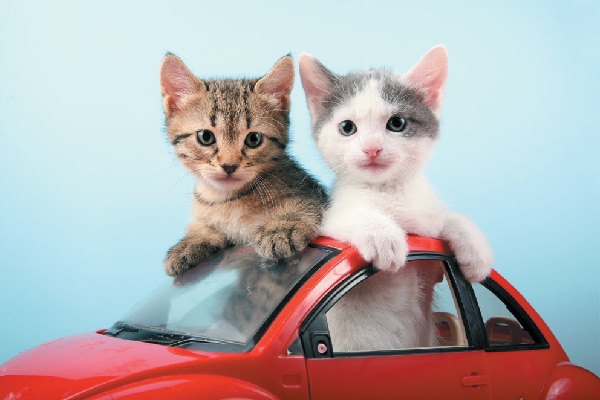
- Kitten: Birth to 6 months
- Junior: 6 months to 2 years
- Prime: 3 years to 6 years
- Mature: 7 years to 10 years
- Senior: 11 years to 14 years
- Geriatric: 15-plus years
Source: International Cat Care (formerly known as Feline Advisory Bureau)
A lifelong cat owner, Stacy N. Hackett writes frequently about cats, cat breeds and a range of pet-related topics. The inspiration for her writing comes from her cats — Jack, Phillip, Katie and Leroy — and her Cocker Spaniel/Labrador Retriever mix, Maggie.
Thumbnail: Photography ©Wavebreakmedia | Getty Images.
Editor’s note: This article appeared in Kittens, a special issue from Catster magazine. Look for Kittens on a newsstand near you!

